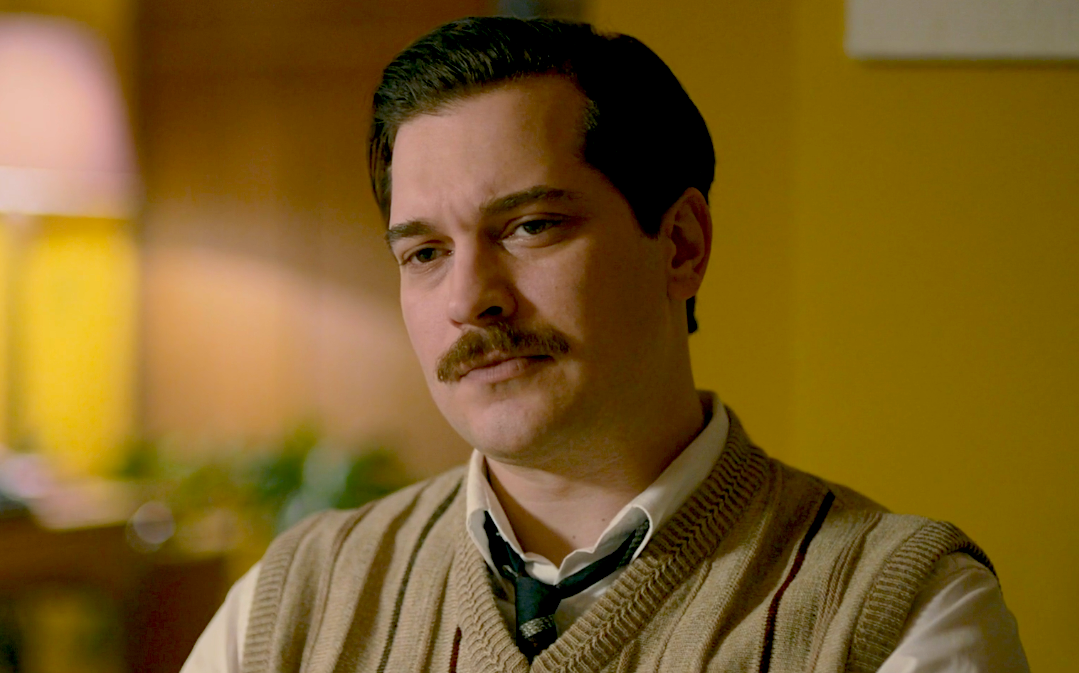The second installment of “Yeşilçam” was even better than the first. New and interesting characters appeared, existing ones became more delineated, and the narrative took an unexpectedly complex and remarkably substantive turn. Marketed as a dramedy set against the glamorous background of the golden age of Turkish Cinema, “Yeşilçam” is turning out to be a sophisticated historical series, which seeks to confront a dark chapter of Turkish history.

SYNOPSIS
Last week, we finally met Semih Ateş, a young but very experienced film producer trying to make a comeback in the 1960s Turkish film industry. He finds his opportunity in a promising script entitled “The Two Sisters,” written by his communist friend Turgut while he was serving a prison sentence for political crimes. He also manages to secure two exceptional leading ladies for the movie: his ex-wife and current Yeşilçam star Mine Cansu, and the promising new talent Tülin Saygi.
His treacherous former partner, who already robbed him of his company, manages to steal Semih's script as well. In this endeavor, Vehbi has the covert support of powerful fellow producer Reha, who happens to be Mine’s secret lover. Reha seems intent on pursuing Semih’s complete ruin while posing as his mentor. While Reha’s motive may include jealousy, other factors are also probably at play.
When Reha plots to steal Tülin’s victory in a beauty contest in order to hurt Semih’s recovery prospects, the latter manages to turn the situation around and gain back the young woman’s confidence. Semih is increasingly impressed by Tülin’s generosity, passion, work ethic, abilities, intelligence, and moral rectitude. She also somehow manages to reconnect him with his most idealist and energetic self. They slowly grow closer, and Semih begins to share his personal story. He soon realizes that they have many things in common besides the love of cinema.

Episodes 3 & 4 reveal a great deal about Semih’s past. His father’s death while he was still a young boy, leaves Semih with no family to take care of him. He ends up alone on the streets of Istanbul and survives by thievery. One day, he meets Uncle Costa, who works as a projectionist in one of Istanbul’s cinemas. The old man takes Semih under his protective wing and, in the process, kindles his passion for cinema. There is no doubt that Uncle Costa holds a special place in Semih’s heart. However, for reasons yet unclear, he is no longer in the producers’ life.
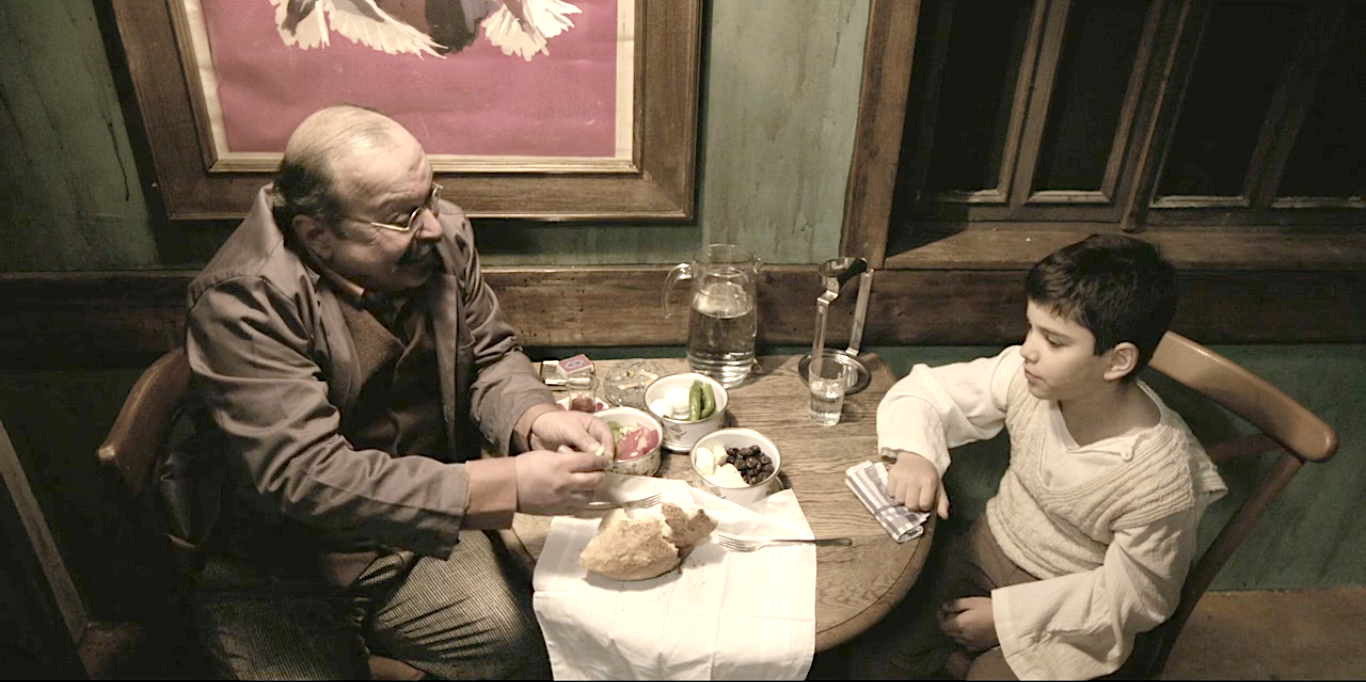
After seeing her picture, the powerful but sinister politician Izzet becomes interested in Tülin. When he plans a subterfuge to meet her, Semih – sensing foul play -- intervenes. Izzet is very full of himself and condescending towards others. He is also a modern-day Fascist, with a racist and authoritarian political agenda. He sends thugs to beat up Vehbi for doing business with a communist screenwriter (Turgut.) He also seeks to establish a Turkish “national” (or rather nationalist) cinema, where only ethnic Turks would be allowed to work. When he proposes the project to Reha, the latter politely declines.
Meanwhile, Semih gets a much-hoped-for dinner invitation from Mine, whom he clearly still cares for. At the restaurant, his ailing mother Belkis – a former prostitute who became very rich and powerful -- also shows up unexpectedly. Semih is furious. Through clever use of flashbacks, we learn that he blames his mother for having abandoned him after his father’s death. It was only many years later, in fact, that Semih recognized Belkis as the mother, who had supposedly died when he was an infant. After an intense confrontation with both Belkis and Mine, Semih storms off visibly hurt. Belkis then threatens Mine with revealing her secret affair with Reha, if she does not help her to reunite with Semih. She believes that Mine, of all people, should know why women like “them” are prone to abandon those, whom they love, in order to survive. Mine is very shaken by the encounter.

While Mine reluctantly accepts to star in Vehbi’s movie, Semih convinces Turgut to write a new script, which will narrate the lives of a group of regular people struggling for their rights. Next, the young producer urgently needs to find the money to realize the film. Semih hopes that Reha will help him with the funding, but the older producer is not inclined to support anything, which involves a communist screenwriter. Trying to catch two birds with one stone, Reha organizes a meeting between Semih and Izzet, during which the latter proposes his “national” cinema project to the young producer. Semih clearly understands what lies behind Izzet’s offer, but accepts it nevertheless. As it turns out, there is a catch. The nationalist film, which Semih will produce with Izzet's financing, is none other than the one based on Turgut’s new script. In a nutshell, Semih plans to make a leftist movie with Fascist money. A perfect storm is about to unleash…
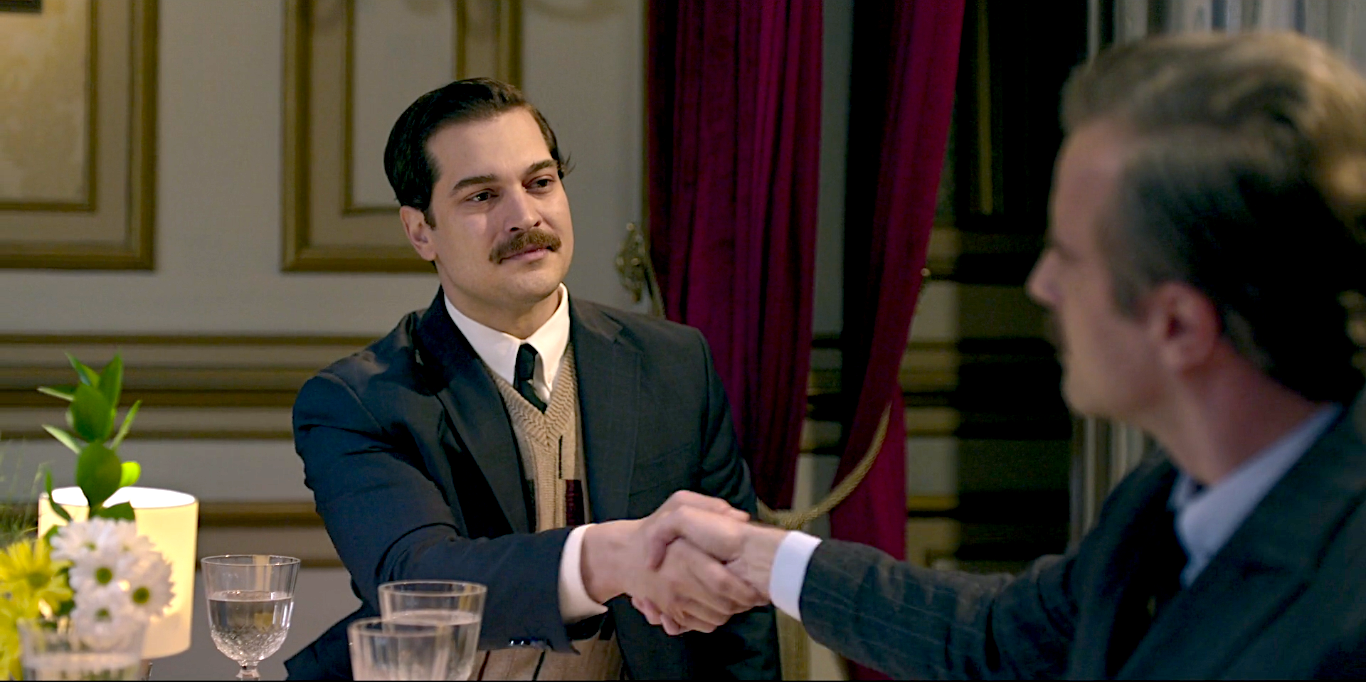
HISTORICAL BACKGROUND
Episodes 3 & 4 reveal that the historical context for “Yeşilçam” is not just the “golden era" of Turkish cinema. While Semih is certainly in the business of fabricating dreams, it is the real course of history that critically shapes his choices in the series.
This week’s episodes mainly focused on Turkey’s treatment of Greeks still living in the country after WWI. As a 1991 report by Human Rights Watch explains, tensions between Greeks and Turks date back to the 1453 capture of the Byzantine capital of Constantinople by the Ottoman Turks, and to the four centuries of Ottoman rule that followed. In 1832, the war of independence led to the creation of the modern country of Greece. Starting during World War I, tensions between the two countries started to escalate and negatively affected the Hellenic community in Turkey. In 1923, the Lausanne Treaty ended the Greek-Turkish war and mandated a population exchange. More than a million Greeks left Turkey for Greece, and about half a million Turks left Greece for Turkey. Since the Patriarchate of the Eastern Orthodox Church was located in Istanbul, the Patriarchate and the Hellenic population of Istanbul were excluded from the exchange. According to the HRW Report, before WWI about 1,800,000 Greeks lived in Turkey. They constituted about one-quarter of Istanbul’s population. After 1923, around 200,000 remained. Currently, it is estimated that there are less than 2,000 ethnic Greeks left in Turkey.
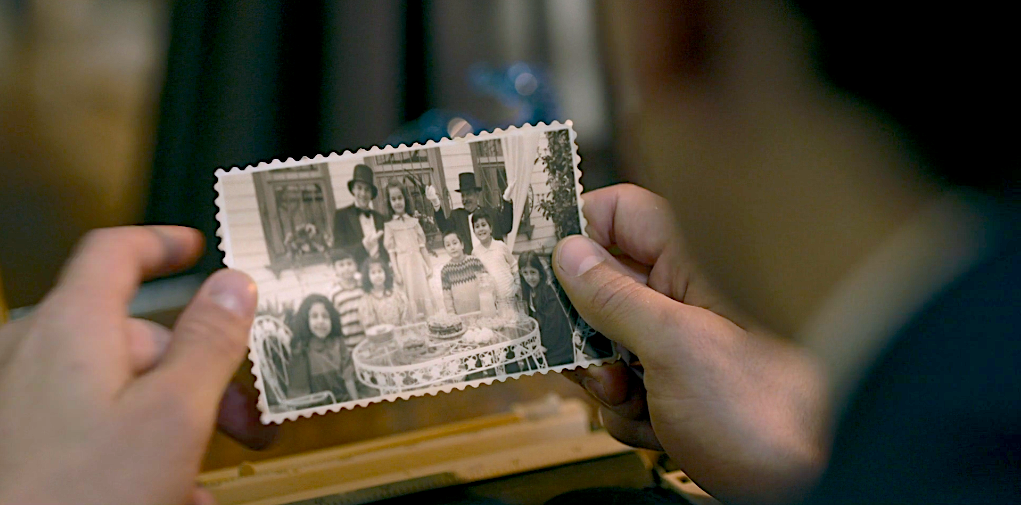
"Yeşilçam” mentions various events, which played a role in causing the further exodus of the Hellenic population from Turkey after 1923. When Nebahat shows Semih a picture of herself as a little girl standing between him and Uncle Costa, we learn that she is Greek and is consequently terrified by the rising anti-Greek sentiment in Istanbul following the 1963 crisis in Cyprus. Semih tries to reassure her. However, he too realizes that the situation can degenerate at any moment. In describing her family’s past suffering, Nebahat refers to a 1932 parliamentary law, which barred Greeks living in Turkey from several trades. She also mentions the violent anti-Greek riots that took place in Istanbul on 6-7 September 1955.
According to the 1991 HRW report, the 1955 violence rose in response to the bombing of the Turkish consulate in Thessaloniki, which damaged the birthplace of Kemal Atatürk. Six years later, a Turkish court found that the prime minister of Turkey and others in the government ordered the attack to incite anti-Greek violence at home. During the 1995 Istanbul riots, several people died or were injured. The angry and well-organized mob sacked, vandalized, and/or destroyed countless homes, schools, shops, churches, monasteries, and cemeteries, which belonged to the Greek, Armenian and Jewish minorities.

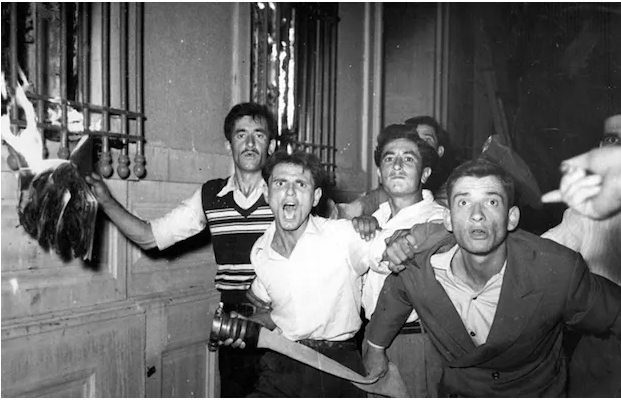
Photos from Turkish news archives of the 1955 Anti-Greek Riots in Istanbul

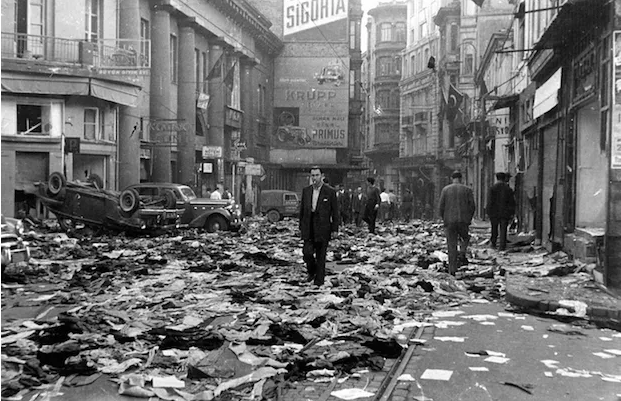
In 2009, the then Prime Minister Recep Tayyip Erdoğan called for a national introspection on Turkey’s past treatment of minorities. Specifically, he declared that:
“For many years various facts took place in our country to the detriment of the ethnic minorities, who lived here. They were ethnically cleansed because they had a different ethnic cultural identity. The time has arrived for us to question ourselves about why this happened and what we have learned from all this. There has been no analysis of this right up until now… In reality – he concluded – this behavior is the result of a Fascist conception. We too have fallen into this grave error.”
In 2009, Turks flocked to watch a film entitled “Güz Sancısı.” Set during the 1955 anti-Greek violence in Istanbul, it was the first movie in Turkey to deal with the event. At the time, the Armenian screenwriter Etyen Mahçupyan declared that “the film couldn't have been made 10 years earlier.” Rev. Dositheos Anagnostopulous of the Greek Orthodox Church in Istanbul added that “Turkish youth today are more critical in their thinking. But to be sure, they need to learn that the 1955 catastrophe occurred, that's why the film is important.” Others, however, criticized the film for portraying the main Greek character (interpreted by Beren Saat) as a prostitute sold off by her family, and de-emphasizing the collective responsibility of the Turkish state in the anti-Greek riots.

Seen in this perspective, then, “Yeşilçam” constitutes a valuable effort to continue the public debate on Turkey’s difficult past that started in 2009. Indeed, at the end of episode 4, the series features a young Semih entering Costa’s house and attempting to take his silver during the 1955 anti-Greek riots. From his astonished expression, it looks as if Semih did not expect to find Costa at home. We shall have to wait till next week to find out the reasons behind Semih’s questionable behavior. The only certain fact, for now, is that he was deeply affected by the 1955 events. He feels gravely in debt and actively seeks the opportunity to redeem himself. This is perhaps why Semih helps Greeks like Nebahat and communists like Turgut. And why he recklessly accepts Izzet’s offer, which will inevitably implicate him in an elaborate and extremely dangerous deception.
CINEMATIC REFERENCES
Episodes 3 & 4 of "Yeşilçam” are rich with cinematic references. Indeed, Levent Cantek and Volkan Sümbül should be congratulated for a highly substantive script, which seeks not only to entertain but also to inform and induce reflection.
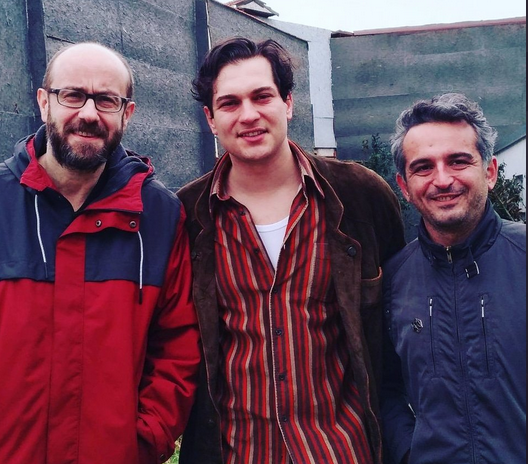
During lunch at the Donizetti Palace, Semih and Izzet discuss the 1964 film “Susuz Yaz” (A Dry Summer.) The movie introduced Turkish cinema to a global audience and won the Golden Bear at the 14th Berlin International Film Festival and the Biennale Award at the 25th Venice Film Festival. It ‘depicts the horror of greed through the story of a tobacco farmer, who dams a river to irrigate his own property and ruin his competitors.’ He also covets his brother’s young wife, while the latter sits in prison for a crime he did not commit. While Izzet disapproves of the film because it provides negative images of Turkish society, Semih appreciates it because it offers a good story. In essence, while Semih evaluates the film based on its artistic value and its ability to attract an audience, Izzet only sees the negative political ramifications that may derive from a movie, which depicts Turkey as an underdeveloped and backward country. “Susuz Yaz” ‘was banned for showing a woman marrying her dead husband’s brother, which would give a negative impression of Turkey to foreigners,’ and had to be smuggled out of the country in order to compete in the Berlin and Venice International Film Festivals.
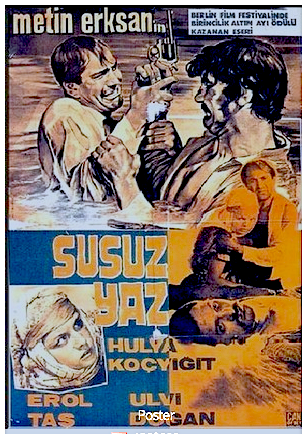 |
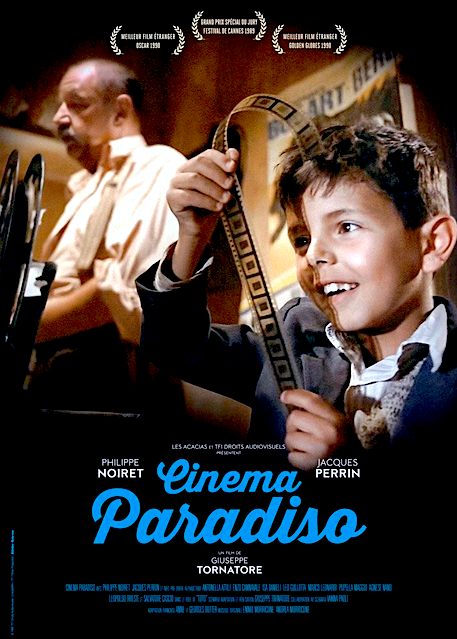 |
Episode 4 of “Yeşilçam” opens with a long homage to “Cinema Paradiso” -- the multi-awarded and incredibly popular 1988 film by Giuseppe Tornatore. The scene is a flashback to Semih’s childhood when Uncle Costa takes him under his wing and teaches him everything he knows about cinema. In essence, we learn here that Semih is who he is because of Uncle Costa’s influence. “Cinema Paradiso” too, is narrated through flashbacks. Salvatore Di Vita is an accomplished film director, who returns to his native village in Sicily for the first time in thirty years for the funeral of Alfredo -- the projectionist at the local "Cinema Paradiso." For Salvatore, who lost his dad in the war, Alfredo represents an invaluable father figure. He was the one to instill in a young Totó the passion for cinema and, in so doing, shape his destiny in adulthood. The Italian film is hailed by critics as an ode to cinema, and an example of “nostalgic postmodernism.”
CHARACTERS
Episodes 3 & 4 introduce two interesting and rather “progressive” new characters. Semih’s mother Belkis, interpreted by true Yeşilçam star Güngor Bayrak is a former prostitute, who acquired remarkable power and money through her ability to control other people’s secrets. Transgender actress Ayta Sözeri also makes her first appearance as Tülin’s acting/dancing coach. We will hopefully see much more of both in future episodes of “Yeşilçam.”

As far as existing characters are concerned, Bora Akkaş gives a great performance as Semih’s alter-ego Hakan. The latter is not only a trusted aide, who knows exactly what the boss seeks to accomplish. He also provides an alternative version of Semih’s personality. Hakan is comical when Semih is deeply serious. He is prudent when Semih is rash. He is flexible when Semih is stubborn. Watching their interaction is truly one of the joys of “Yeşilçam.”
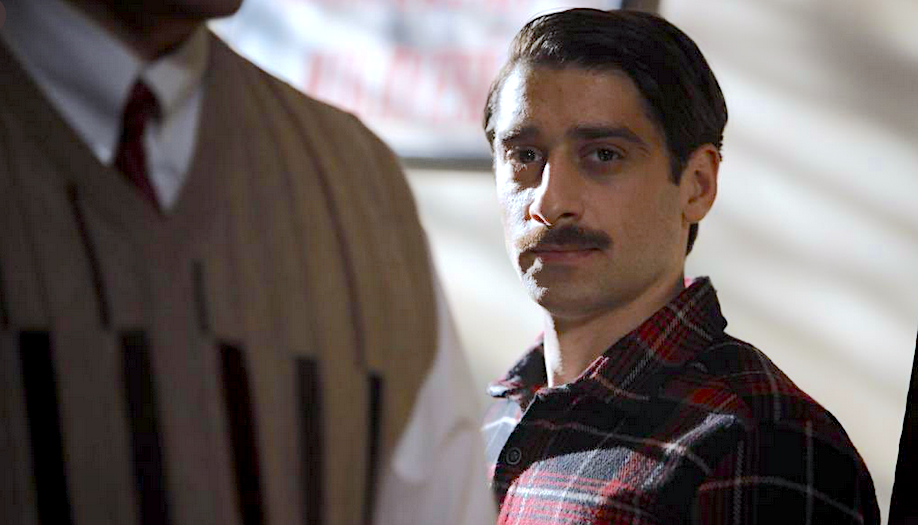
This week, we also learned much more about Turgut. He is clearly an idealist, perhaps a utopian. When Semih acts as the pragmatic businessman, Turgut accuses him to live as if he were already dead, of confining his dreams to the make-believe (and hence risk-free) world of cinema. Indeed, one of the most difficult scenes to watch in episode 4 is that of Semih requesting the modification of Turgut’s script in order to avoid trouble. The disappointment in Tülin’s and Turgut’s eyes, who look at him as if he were a coward, clearly shakes Semih to the core.

In episodes 3 & 4, “Yeşilçam” cleverly juxtaposes Izzet and Reha to Semih. Reha is a businessman, who cares only about profit. Izzet, on the other hand, is an idealist himself, but a dangerous one. He is willing to sacrifice anyone and anything in order to impose his superior vision on the rest of the world. Semih too poses as a businessman but is an artist at heart. And while he tries to hide it, he too is an idealist, but of the romantic variety. Both points are effectively illustrated by the reference to Nâzım Hikmet Ran, a romantic communist poet who is considered as the charismatic leader of the Turkish avant-garde, and was repeatedly arrested in Turkey for his political beliefs.
As far as the two female leads in the series, this was definitely Mine’s week. Selin Sekerci offers a nuanced interpretation of a mature movie star torn between her heart and ambition. She also portrays Mine as an incredibly sexy, but also highly intelligent woman, who is forced to disguise her cleverness in a world dominated by men. Afra Saraçoğlu has yet fully to shine as Tülin. Hopefully, the script will offer her more opportunities in the coming episodes of "Yeşilçam.” So far, she has portrayed the role of the young, intelligent, and idealist aspirant actress quite proficiently, but still appears a tad too young for the role.
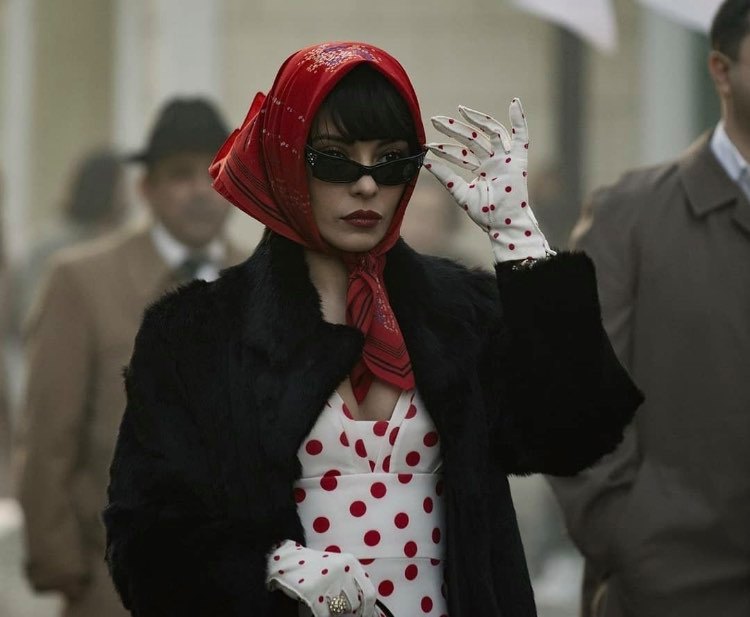
Finally, there are really no words left to describe the quality of Çağatay Ulusoy’s interpretation as Semih. This week he masterfully represented the full gamut of human emotions -- from unadulterated joy to painful regret, from nostalgia to denial, from deep rage to ingenious plotting, and from pragmatism to romantic idealism. He even displayed impressive dancing skills. We cannot wait to see with what he will delight viewers next.
FINAL CONSIDERATIONS
Most people tune into “Yeşilçam” to watch handsome Çağatay Ulusoy or reminisce about the “golden era” of Turkish cinema. Along the way, they will also hopefully realize that this series is much more than an actor’s showcase, or an exercise in nostalgia. Indeed, this week “Yeşilçam” has really taken shape as a masterful tour de force. By combining drama, comedy, and nostalgia with serious reflection on important themes, the series belongs to a class of its own. And it is definitely on its way to becoming a memorable example of television, which fulfills the highest standards of cinema in terms of content, storytelling, acting, cinematography, and design. In addition, “Yeşilçam” offers several opportunities for introspection. It discusses cinema as a tool, which can be used either positively to entertain and/or stimulate reflection about difficult subjects, or negatively to broadcast propaganda in the service of a perverse political agenda. And it appears set on rekindling a much-needed public debate on key issues in contemporary Turkish history.
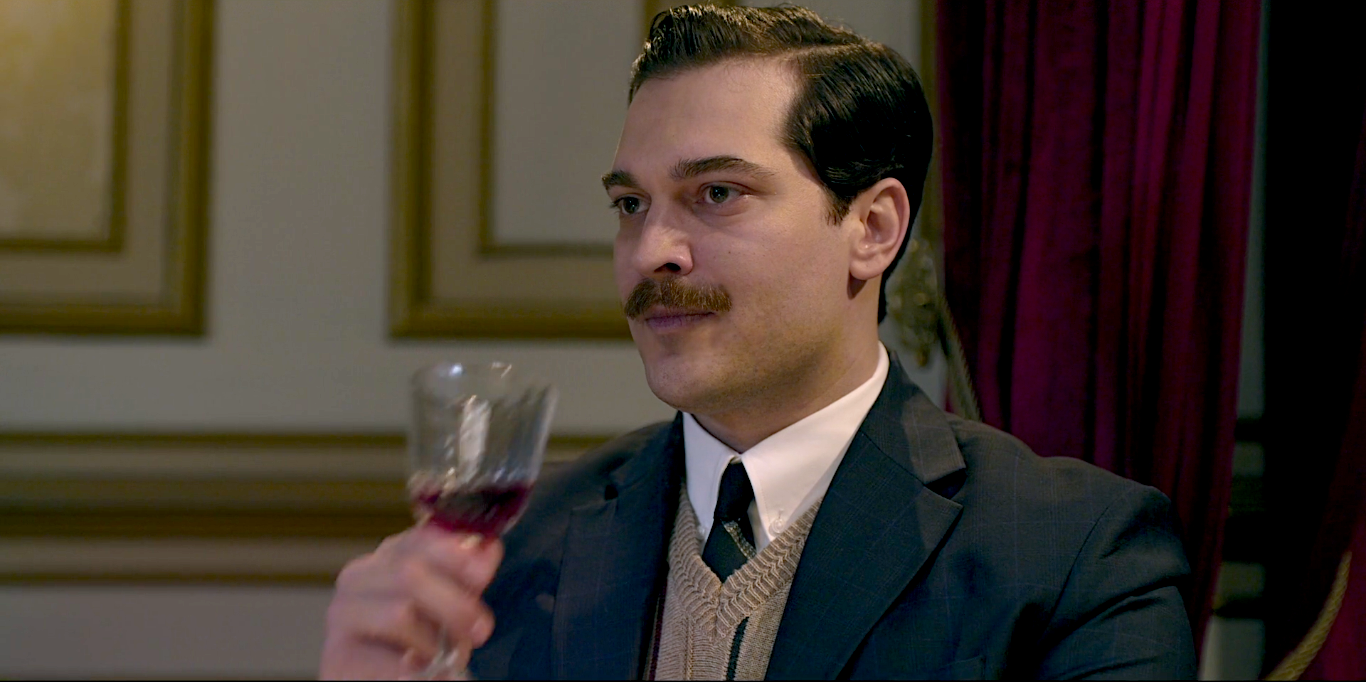
For more information about Çağatay Ulusoy visit Cagatay Ulusoy International on its website and on its various social media platforms.
